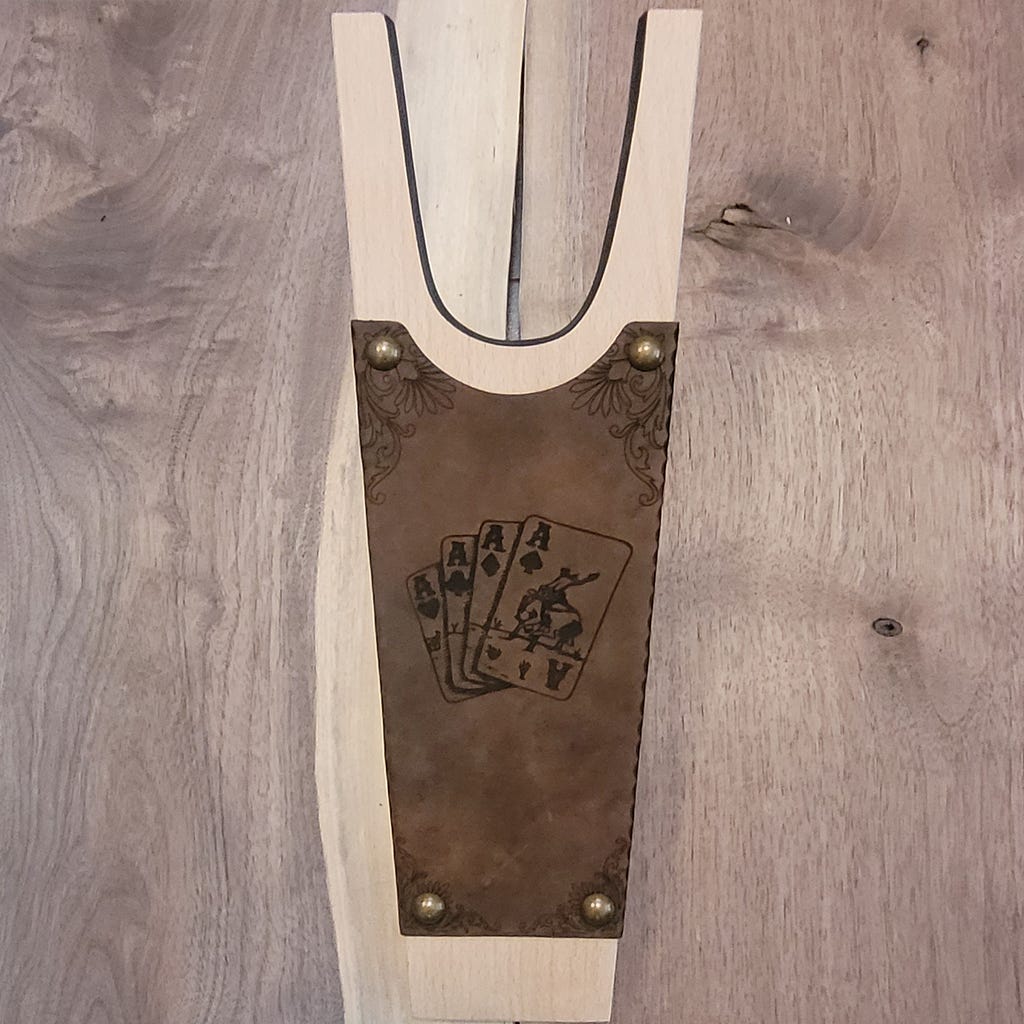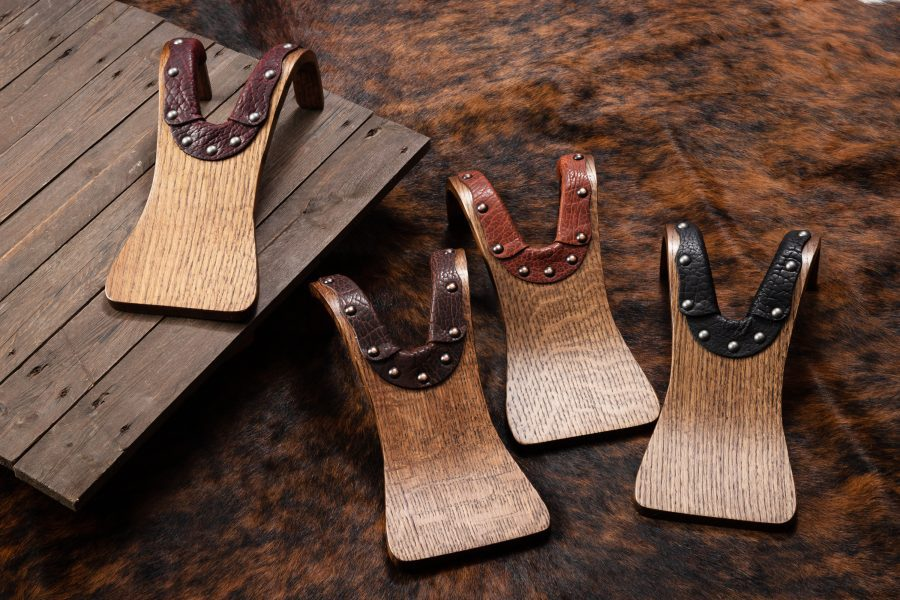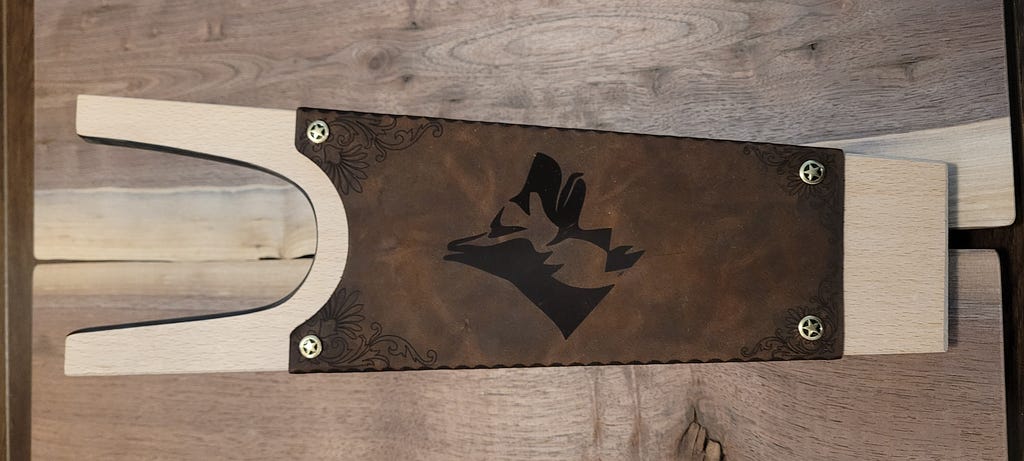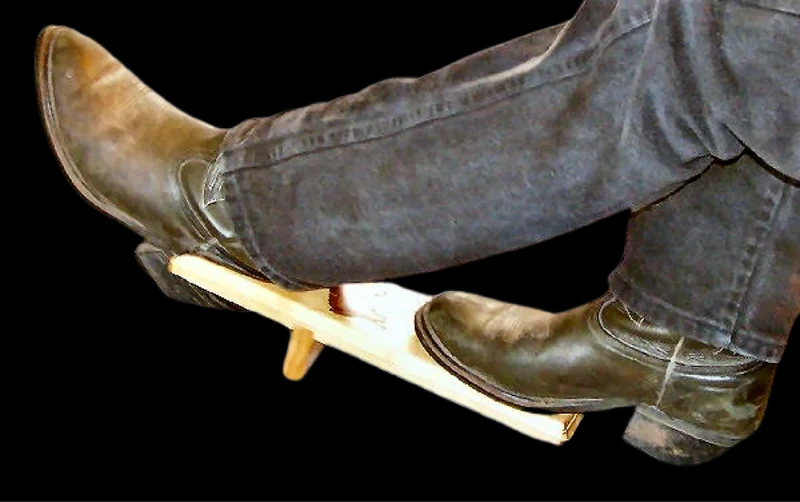
Are you sick of having to fight to take off your boots after a hard day? If so, you are in the right place.
We’ll introduce you to the world of boot jacks in this in-depth lesson and demonstrate how they may make taking off your footwear so much simpler.
Bring on a more effective and joyful experience and wave goodbye to the trouble of wrangling with your footwear.
What is a Boot Jack?
A boot jack is a simple yet ingenious device designed to help you effortlessly remove your boots. It typically consists of a flat base with a U-shaped or V-shaped notch and a handle. This unassuming tool can be a game-changer for anyone who wears boots regularly.
In the 19th century, a prevalent boot jack design featured a cast iron cricket shape. Its antennae served as heel placement for boot removal. This particular boot jack, promoting William McKinley’s 1896 campaign, paid homage to “gold bugs,” Republican gold standard supporters.

Types of Boot Jacks
Boot jacks come in various styles and designs, catering to different preferences and needs. Whether you’re a traditionalist or someone looking for modern innovations, there’s a boot jack for you.
Here, we’ll explore the different types of boot jacks and their respective advantages:
Traditional Boot Jacks:
Traditional boot jacks feature a classic design with a U-shaped or V-shaped notch for inserting the heel of your boot.
Pros:
- Time-tested and durable.
- Simple and effective design.
Cons:
- May require more physical effort than modern counterparts.
Modern Boot Jacks:
Modern boot jacks often come with ergonomic improvements, such as longer handles, non-slip bases, and enhanced leverage mechanisms.
Pros:
- Effortless boot removal.
- Innovative features for added convenience.
Cons:
- Some models can be pricier than traditional boot jacks.
How to Use a Boot Jack
Using a boot jack is a straightforward process, but it’s essential to follow the correct technique to ensure efficient and safe boot removal. Here’s a step-by-step guide on how to use a boot jack effectively:
Step 1: Position Your Boot Jack
Place the boot jack on a stable, flat surface. Ensure that it won’t wobble or slip while in use.
Step 2: Insert Your Boot
Sit down or balance on one foot while you place your other foot into the boot you want to remove.
Step 3: Position Your Heel
Position your heel snugly into the U-shaped or V-shaped notch of the boot jack. Ensure that your boot’s heel is securely seated in the notch.

Step 4: Apply Downward Pressure
Push downward firmly and steadily with your other foot on the base of the boot jack, while keeping your heel in place.
Step 5: Slide Your Foot Out
As you push down, your boot will start to slide off your foot effortlessly. You’ll feel the heel come out first.
Step 6: Repeat for the Other Boot
Follow the same steps for your other boot.
Step 7: Store Your Boot Jack
After removing your boots, store your boot jack in a convenient and accessible place for future use.

Maintaining Your Boot Jack
Proper maintenance of your boot jack is essential to ensure it remains effective and durable over time. Regular care and attention will help extend the life of this useful tool. Here’s how to maintain your boot jack:
Cleaning Your Boot Jack:
- Dust and dirt can accumulate on the boot jack’s surface and in the notch. Regularly wipe it clean with a damp cloth to remove any debris.
- For stubborn stains or residue, use a mild detergent or soap with warm water and a soft brush to scrub the surface gently. Rinse and dry thoroughly.
Inspecting for Damage:
- Periodically inspect your boot jack for signs of wear, damage, or loose parts. Pay special attention to the notch area, the base.
- If you notice any loose or damaged components, tighten or repair them promptly to maintain the boot jack’s functionality.
Storing Your Boot Jack:
- When not in use, store your boot jack in a dry, cool place. Avoid exposure to direct sunlight or extreme temperatures, which can cause material deterioration over time.
- Consider hanging it on a wall or placing it in a designated boot accessory storage area for easy access.
Replacing Worn-Out Parts:
- As with any tool, boot jacks can experience wear and tear. If certain parts become excessively worn or damaged beyond repair, consider replacing them.
- Check with the manufacturer or supplier for replacement parts or consider investing in a new boot jack.
Avoid Excessive Force:
- While boot jacks are designed to make boot removal easier, avoid using excessive force that could potentially damage the boot jack or your boots. Use gentle but deliberate pressure when removing your footwear.
Benefits of Using a boot Jack
Using a boot jack offers numerous benefits that can significantly enhance your footwear routine. Here are the key advantages of incorporating a boot jack into your daily life:
- Effortless Boot Removal: The primary benefit of a boot jack is that it simplifies the process of removing your boots. By using the leverage provided by the tool, you can effortlessly slide your foot out of your boots without struggling or exerting excessive force. This ease of use is especially valuable for individuals with snug-fitting or high-top boots.
- Preserves Boot Integrity: Removing your boots by hand can lead to unnecessary wear and tear, especially on the heel counter and shaft. A boot jack minimizes the risk of damaging your boots during the removal process, helping to maintain their shape and structural integrity.
- Time and Convenience: Boot jacks save you time and make changing footwear more convenient. Whether you’re coming home after work or preparing for outdoor activities, a boot jack allows for quick and efficient boot removal, eliminating the need for unnecessary hopping or tugging.
- Hygiene and Cleanliness: Using a boot jack can help keep your hands clean. This is particularly advantageous when your boots are muddy or dirty. You won’t have to touch the soiled areas of your boots, promoting better hygiene.
- Reduced Physical Strain: Boot jacks are designed to minimize the physical effort required to remove boots. This can be especially beneficial for individuals with mobility issues or those who wear heavy work boots.

- Extended Boot Lifespan: By using a boot jack, you reduce the risk of accidentally scuffing or damaging your boots during removal. This, in turn, can extend the lifespan of your boots, saving you money in the long run.
- Universal Use: Boot jacks are versatile and suitable for various types of footwear, including cowboy boots, rain boots, work boots, and more. They adapt to different boot heights and sizes, making them a valuable tool for boot wearers of all kinds.
- Convenient for All Ages: Boot jacks are user-friendly and suitable for individuals of all ages, from children to seniors. They provide a consistent and reliable method of boot removal.
Boot Jacks for Different Footwear
While boot jacks are primarily designed for, well, boots, they can also be incredibly useful for various types of footwear. Different boots have unique characteristics, and knowing how to use a boot jack for each type can ensure that your footwear stays in great condition. Here’s a guide on using boot jacks for different types of footwear:
Cowboy Boots:
Cowboy boots often have intricate designs and can be challenging to remove due to their high shafts. When using a boot jack for cowboy boots, ensure that the heel of the boot is securely placed in the notch. Gently apply pressure on the base to slide your foot out while holding the boot’s shaft to prevent damage.
Rain Boots:
Rain boots are typically made of rubber and may have a tighter fit around the calf. When removing rain boots with a boot jack, ensure that the notch accommodates the width of the calf. Hold the boot’s upper part while using the boot jack to avoid overstretching or damaging the material.
Work Boots:
Work boots can be heavy and rugged, making them ideal candidates for boot jack use. Place the heel firmly into the boot jack’s notch and use gentle but deliberate pressure to remove your foot. The boot jack will help you avoid straining yourself when removing bulky work boots.
High-Top Boots:
Some boots have higher shafts, extending up the leg. When using a boot jack for high-top boots, position the boot jack so that it provides adequate support for the entire shaft. This ensures that the boot comes off smoothly without bending or creasing the material.
Dress Boots:
Dress boots may have a more slender design and softer leather. To prevent any damage to the delicate material, use extra care when removing them with a boot jack. Ensure that the notch fits the heel snugly, and use gentle pressure to avoid any undue stress on the boots.
Hiking Boots:
Hiking boots are built for durability but can be challenging to remove due to their sturdy construction. When using a boot jack for hiking boots, make sure the notch accommodates the heel’s width and apply steady pressure to ease your foot out without excessive force.
Snow Boots:
Snow boots are designed to keep your feet warm and dry in harsh conditions. Using a boot jack for snow boots helps prevent the snow and moisture from spreading as you remove them. Ensure a secure fit in the notch and remove them carefully to keep your feet dry.
Bottom Line
A boot jack is a simple tool with the power to simplify your footwear routine significantly. Whether you opt for a traditional design, a modern innovation, or even decide to craft your own, incorporating a boot jack into your daily routine can save you time, effort, and frustration.
Say goodbye to boot-removal struggles and hello to effortless, convenient footwear changes. Make a boot jack your trusty companion, and you’ll wonder how you ever managed without one.
DIY Boot Jacks:
For the crafty and budget-conscious, DIY boot jacks offer a chance to create your custom boot removal tool using readily available materials.
Pros:
- Highly customizable.
- Cost-effective.
Cons:
- May require some crafting skills.
Choosing the right type of boot jack depends on your personal preferences and needs. Traditional options offer reliability and simplicity, while modern designs bring added convenience.
from Stories by Wine And Design on Medium
via https://medium.com/@wineanddesign/the-ultimate-boot-jack-guide-simplify-your-footwear-routine-351337ee105b?source=rss-693b68666104------2

No comments:
Post a Comment